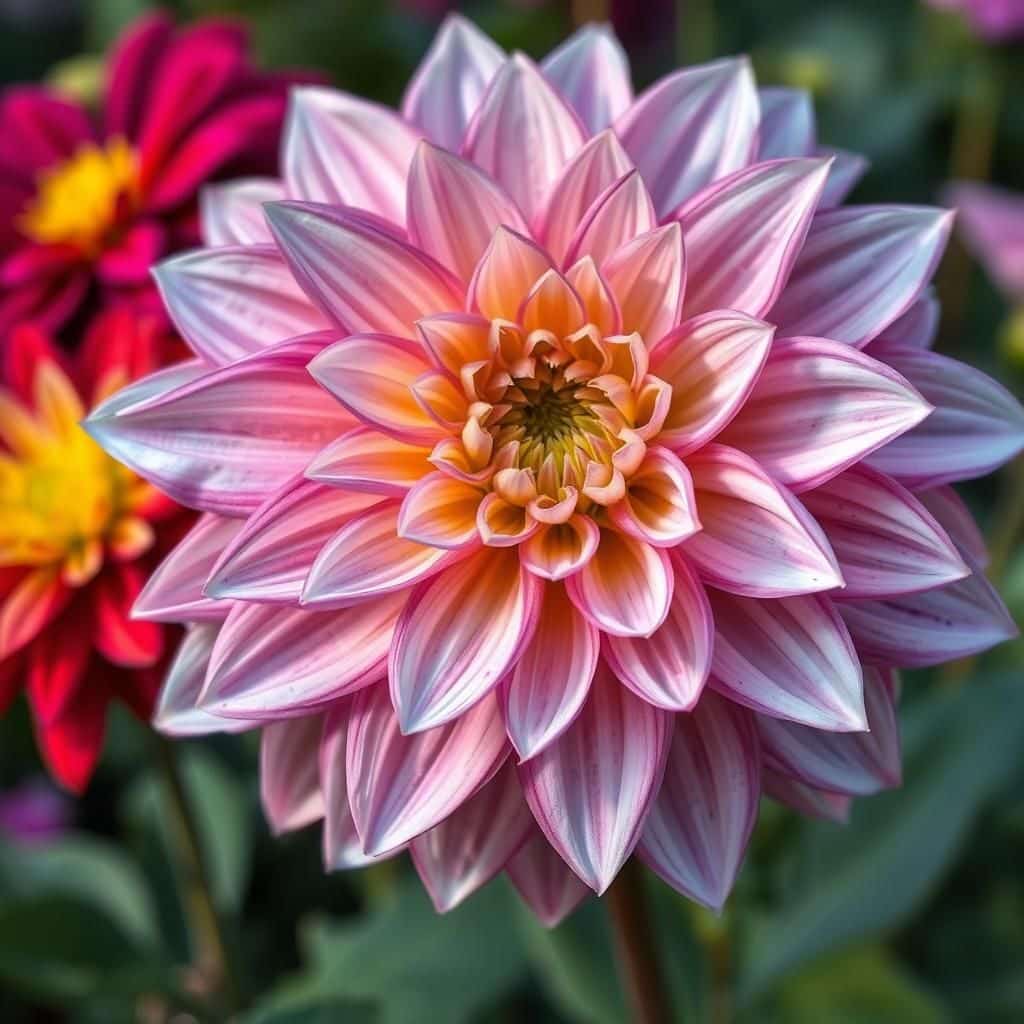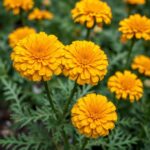Are Dahlias a Perennial or Annual? Discover the Truth About This Stunning Flower

Dahlias are a popular choice among gardeners for their stunning blooms and vibrant colors, but there often lies a question: Are dahlias perennial or annual flowers? Understanding the classification of these beautiful plants is crucial for proper care and cultivation. This article delves into the truth about dahlias, exploring their life cycle, growing conditions, and how to successfully nurture them in your garden. Whether you’re a seasoned gardener or a novice, knowing whether dahlias are perennial or annual will help you make informed decisions and create a stunning floral display that lasts. Let’s uncover the secrets of this captivating flower.
Are Dahlias Perennial or Annual?
Dahlias are primarily consideredperennials, which means they can return year after year in suitable climates. However, their growth and survival largely depend on the climate in which they are grown. In regions withmild winters, dahlias can survive outdoors by going dormant during the colder months, allowing them to regrow in the spring. Conversely, in areas with harsher winters, they often need to be dug up and stored in a frost-free place until the growing season returns. Ultimately, whether dahlias behave as annuals or perennials can depend on local growing conditions.
Climate Influence on Dahlia Growth
The growth of dahlias is significantly affected by their surrounding climate. In warmer regions, they are more likely to thrive asperennials, as they can endure winter dormancy without frost damage. In contrast, colder climates may require gardeners to treat them asannuals, as the frosty conditions can kill them off if they are not protected. Thus, understanding your local climate is crucial for the successful cultivation of these vibrant flowers.
Growing Conditions for Perennial Dahlias
To ensure dahlias thrive asperennials, specific growing conditions must be met. They prefer areas with well-drained soil, plenty of sunlight, and adequate watering during dry spells. Ensuring proper spacing between plants allows for optimal airflow and prevents diseases, which can significantly affect their longevity. Committing to proper care can lead to stunning blooms year after year.
Winter Care for Dahlias
In climates that experience harsh winters, taking proper precautions for dahlias is essential for their survival. Gardeners often need to dig up the bulbous roots before the first hard frost and store them in a cool, dry place. It is crucial to keep the tubers in a slightly humid environment to prevent them from drying out completely. When spring arrives, they can be replanted, allowing them to bloom once more.
See also:
Dahlias as Annuals in Cold Climates
In regions where winters are exceptionally cold, dahlias are often treated asannuals. This approach eliminates the need to dig up and store the tubers each winter. Instead, gardeners may choose to plant new dahlia seeds or tubers every spring. As annuals, dahlias provide vibrant color and attractive blooms for a single growing season, showcasing their beauty until the first frost.
Choosing Between Perennial and Annual Dahlias
When deciding whether to grow dahlias asperennials orannuals, gardeners should consider their local climate and personal preferences. Those in mild climates can enjoy the benefits of perennial dahlias, which return with less effort year after year. Meanwhile, those in cooler regions may find it easier to replant annuals each season. Ultimately, the choice between the two varies based on environmental factors and the level of commitment one is willing to invest in their blooming period.
| Type | Climate | Care Requirements |
|---|---|---|
| Perennial | Mild winters | Dormancy care; well-drained soil |
| Annual | Cold winters | Replant each spring |
Understanding the Growth Cycle of Dahlias
Dahlias are fascinating flowers that often raise the question of whether they are annuals or perennials. The truth is, dahlias are classified as perennial plants, meaning they can grow back year after year. However, they require specific care during the winter months, especially in cooler climates, where the tubers need to be dug up and stored to ensure their survival. This adaptability and variety make dahlias a unique choice for any garden, but proper knowledge is essential to maximize their longevity and beauty.
What Makes Dahlias Perennials?
Dahlias are considered perennials because their tubers can survive winter conditions if adequately protected. Unlike annuals, which complete their life cycle in a single growing season, dahlias can grow from their tubers for many years. With the right care, including proper winter storage, they will return each spring, producing stunning blooms once again.
How to Care for Dahlia Tubers in Winter
To ensure dahlias survive winter, it's vital to know how to properly store their tubers. After the first frost, the tubers should be carefully dug up and cleaned. They should be allowed to dry and then stored in a cool and dry place, ideally in a container with peat moss or sawdust to prevent rot. Maintaining the right humidity level is also essential, as excess moisture can lead to decay, ensuring these gorgeous flowers will flourish again in the spring.
See also:
Dahlia Varieties: Perennial or Annual?
While all dahlias are technically perennials due to their tuberous roots, certain growing methods may lead some gardeners to treat them like annuals. In regions where winters are harsh, gardeners often choose to plant dahlias as annuals, enjoying their beauty for a single season without the need for winter care. This practice highlights the adaptability of dahlias in different climates and gardening situations.
Best Locations for Planting Dahlias
When choosing a location for planting dahlias, it's important to consider sunlight and soil conditions. Dahlias thrive in full sunlight, requiring at least six to eight hours of direct sun each day to bloom prolifically. Moreover, well-drained, fertile soil will promote healthy growth. Selecting the right planting site can significantly impact the overall health and abundance of blooms.
Common Pests and Problems with Dahlias
Like many garden plants, dahlias can be susceptible to various pests and diseases. Common issues include aphids, slugs, and fungal infections. Regular monitoring of the plants is crucial, as early detection allows for more effective treatment. Implementing practices such as crop rotation, proper spacing, and maintaining healthy soil can help prevent these problems and ensure a thriving dahlia garden.
Questions from Our Readers
Are dahlias considered annuals or perennials?
Dahlias are generally considered perennials, which means they can return year after year in suitable climates. However, in colder regions, they are often treated as annuals because the tubers may not survive the winter frost.
How do I care for dahlias to ensure they come back each year?
To ensure dahlias return each year, it is important to properly care for their tubers during winter. This includes digging them up after the first frost, cleaning them, and storing them in a cool, dry place to prevent rot and freezing.
See also:
Can dahlias survive winters in colder climates?
In colder climates, dahlias generally do not survive the winter if left in the ground. Therefore, many gardeners choose to lift the tubers and store them indoors to protect them from harsh temperatures.
What are the benefits of growing dahlias as perennials?
Growing dahlias as perennials provides numerous benefits, such as long-lasting blooms, ease of care, and the ability to develop a robust root system over time, which can lead to larger and more vibrant flowers each season.

If you want to read more articles like Are Dahlias a Perennial or Annual? Discover the Truth About This Stunning Flower, we recommend you check out our Flowers category.
Leave a Reply
Related Articles